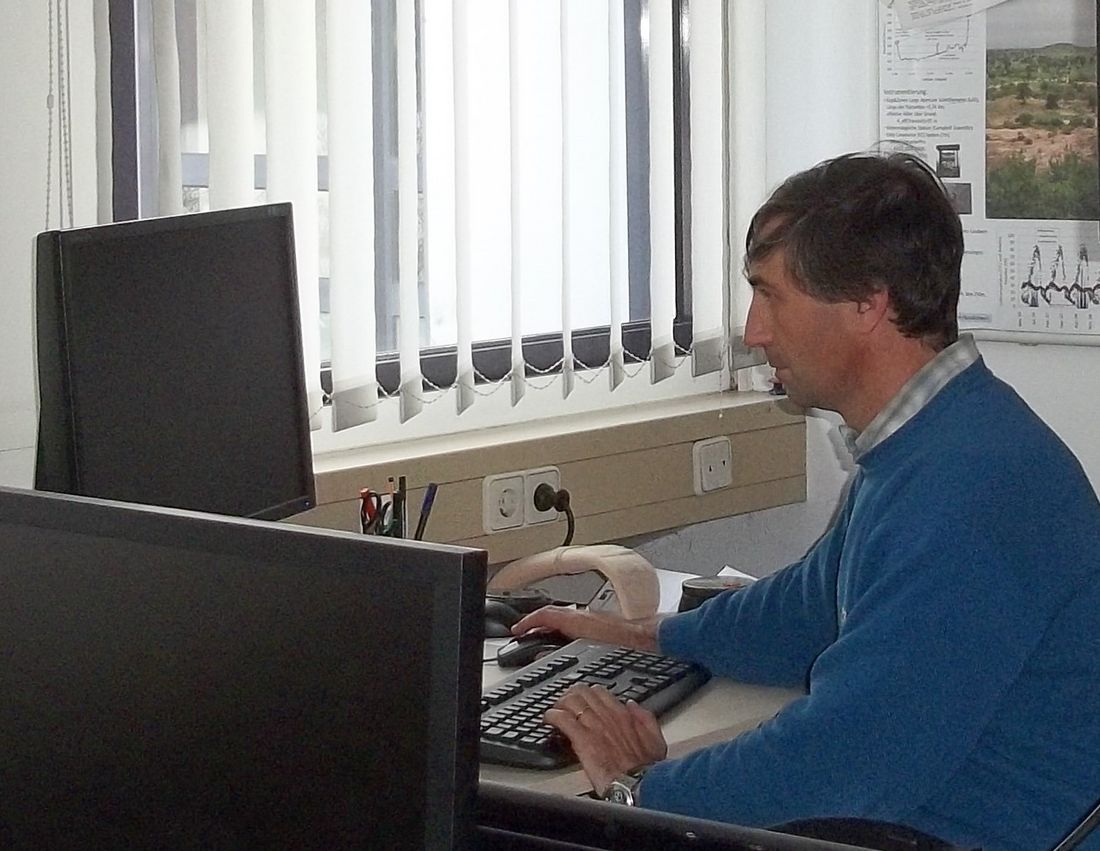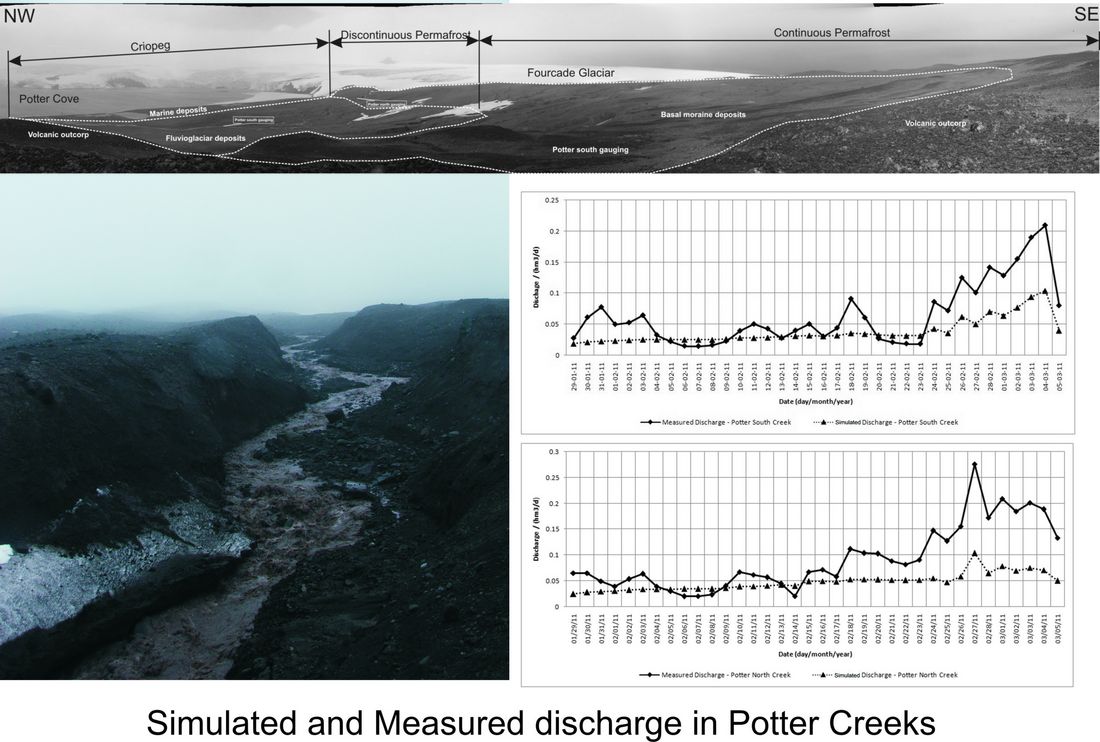
Adrián Silva Busso at the University of Bonn, © A. S. Busso
Modelling of glacial melt water discharge for an Antarctic summer period
During my stay at the University of Bonn (ZFL) Ulrike Falk and I studied the glacier discharge from the Warszawa Icefield, King George Island / Isla 25 de Mayo (KGI). Our analysis was based on data from two glacier creeks and the respective aquifers developed on the permafrost area. We proposed a simulation of the discharge based on a Monte Carlo method and on Fourier analysis. Meteorological data were used in the model to estimate discharge, and results were validated using hydrological field measurements in the two basins of Potter South and North creeks (PSC and PNC), where discharge can be clearly correlated with air temperatures.
We also analysed the groundwater flow based on data from a high resolution field measurements performed in the "Potter Basin". We have used vertical electrical soundings (VES), geological and hydrogeological surveying methods, geomorphological interpretation based on satellite imagery, permeability tests, piezometric level measurements, meteorological, geocryological and glaciological data sets, to adapt a hydrogeological model for the Potter Peninsula discharge area. Using this simulation, we can understand the dynamics of summer groundwater discharge from the Potter Basin and quantify the discharge volume.
The melt-driven drainage of fresh water into coastal areas has a strong impact on the coastal marine biota since it changes the chemical and physical properties of the water, e.g. salinity, temperature and sediment loads that affect the local environment. Therefore it is important to understand the dynamics of the discharge process and its dependence on aerial temperatures and ice mass thawing. Our study is moreover important for the definition of the local glacial mass balance on Potter peninsula as a consequence of the global climate change.
Some more words about Cryopeg:
The cryopeg can be found in coastal areas with permafrost as it forms a part of permafrost. It is a layer of unfrozen ground in which freezing is prevented by freezing-point depression due to the dissolved-solids content of the pore water. The cryopeg area is a mixture between see water, fresh water, interstitial ice or buried ice in the interphase zone between permafrost and the sea coast.
All the best
Adrián S. Busso

